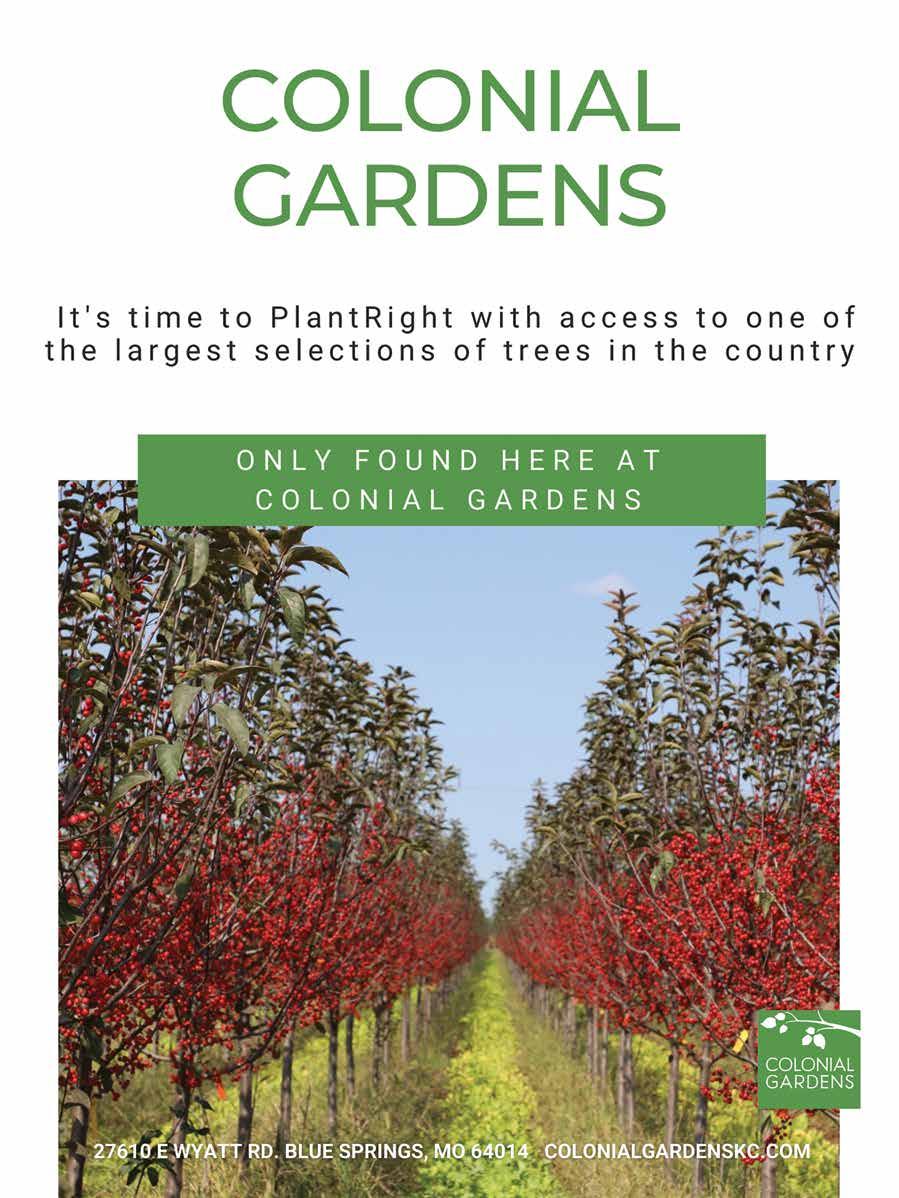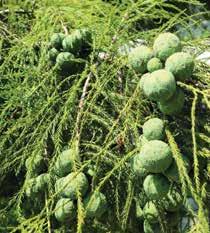
4 minute read
Ask the Experts
BALD CYPRESS CONES
Question: I have noticed these round balls on my bald cypress that I had not seen before. Is this a disease or some type of seed?
Answer: Those round balls, usually larger than a marble, on the tree are cones. Believe it not, bald cypress is a gymnosperm which means its seeds are enclosed in a cone. Bald cypress is a deciduous evergreen. Because of its seed structure, it is closely related to pines and their fruiting structure.
The cone starts out green and turns brown as the summer progresses. As it matures, you will begin to see the scales much like a pinecone. Eventually, it will start to open. The seeds are protected within the cone and released once they mature. Here’s an interesting fact, the tree gets the common name ‘bald’ cypress because the branches are bare during the winter. Bald branches are unlike other evergreen gymnosperms dropping their foliage.
OH MY PHLOX HAS POWDERY MILDEW
Question: My phlox have grown wildly and multiplied over the years. This is the third year now I’m noticing this white mold on the leaves. This causes the bottom leaves to shrivel up and turn brown with the result of not having many blooms. A friend told me the problem was a lack of wind and being too close together. What do you think?
Answer: It sounds like a terrible case of powdery mildew on phlox. This is common. The friend was referring to improved air circulation, which helps the plant dry out from excess moisture. Mildew happens during moist, humid weather patterns. The theory is the better the air circulation, the less likely mildew will occur. It sounds good in theory but does not really work that way. Fungicide applications are an option but challenging as the moist Bald cypress cones.
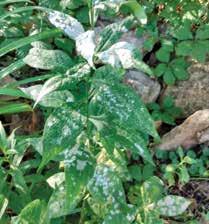
Powdery mildew on phlox.
weather pattern occurs over a long period of time, which means spraying repeatedly.
The best option is to plant more mildew-resistant tall garden phlox varieties. A white flowering variety to consider is ‘Mount Fuji’ or ‘David.’ If you desire pink or purple, check out ‘Nicky’ or ‘Richard Poore.’
A few years ago, the Chicago Botanical Garden did a study on mildew resistance in phlox. Search “Chicago Botanical Garden PhIox Trials” on the internet for more information on other less susceptible varieties for the garden.
CARPENTER BEES, BENEFICIAL POLLINATORS OR NOT
Question: I want to help our pollinators as I understand their benefits to our environment and my garden. I got into an interesting discussion about carpenter
PVC piping used as cover support.
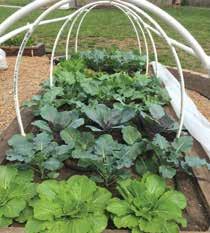
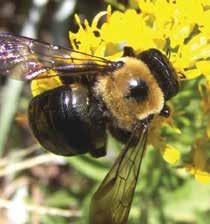
Carpenter bee.
bees with my friends. One person said they are destructive and suggested killing them. While another person said they are beneficial pollinators and not to kill them. Who is correct?
Answer: Rarely does this happen, but both friends are correct. Carpenter bees are one of our native pollinators. As they feed and move from plant to plant, they transfer pollen. Unfortunately, carpenter bees also bore holes into wooden structures, such as decks, and can become a pest. Their tunneling weakens structures. What are you to do?
I guess this question gets my “it depends” answer. If they are on your property as only pollinators, embrace these hard-working bees. If they are drilling holes in your structure, eliminate them before they cause irreparable damage. You could consider bridging the divide by leaving a few large logs or stumps in your garden to provide a home for the carpenter bees.
As a side note, be sure they are carpenter bees. Many confuse carpenter bees with bumblebees, also an exceptional native pollinator. Carpenter bees have a shiny butt, while bumblebees have a hairy butt. Boy humor likes to say shiny butt instead of the correct term shiny abdomen. Hey, I am a guy.
HOW TO EXTEND GROWING SEASON
Question: Heading into fall and winter, I am looking to extend the harvest from my vegetable garden longer into the year. Are there any tricks for getting a few more weeks out of the garden?
Answer: Extending the growing season is easy to do with a few practices. Place a covering over the planting to trap the warmth of the soil, resulting in plant growth into November or even December. Vegetables must be cold tolerant. Spinach, kale, and root crops like beets, carrots, and turnips work best in these conditions.
Cover the bed with either a spun poly sheeting, often called row cover, or plastic sheeting. Row cover can simply be laid over the area and pinned down so it doesn’t blow away. For the plastic sheeting, make a low tunnel from PVC piping or other bendable material used as supports. This is similar to building a little unheated greenhouse over the planting. The hoops are about 2 feet in height in the center and 3 feet or so wide. Again, it must be secured but also removable to access the harvest.
Plant your crops in September or early October and harvest until harsh winter conditions put an end to the season. I have heard reports of spinach surviving the winter and start picking again in late winter or early spring. Fresh garden spinach sounds pretty good with a warm bowl of soup in winter.
DENNIS PATTON Horticulture Agent
Dennis Patton is the horticulture agent for Johnson County K-State Research and Extension. For free information fact sheets, visit www.johnson.ksu.edu, or call the Extension office at 913-715-7000.
